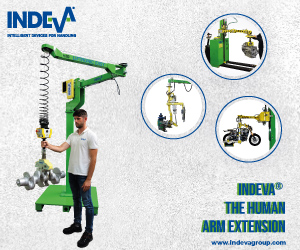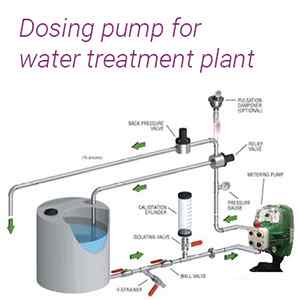Articles
An Overview Of Distributed Control Systems (DCS)
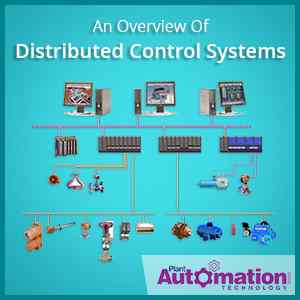
“The global total revenue of Distributed Control Systems (DCS) will enhance to $23.37 billion by 2025 with a CAGR of 4.5% owing to a continuous adoption of automation systems (DCS) in various industry verticals, according to ResearchAndMarkets.com's report.”
Market Highlights
Distributed Control Systems (DCS) plays a vital role in manufacturing industries as they are used to control and manage the processes. The networking capabilities of DCS are useful in the process management and the inputs or resulted outputs can be an analog signal or discrete signal.
Distributed Control Systems are used merely in the innovative emerging process industries as an extension of traditional controllers. The major concept of distributed control systems application is derived from the idea of decentralizing the control unit and establishing a common network between the engineering stations.
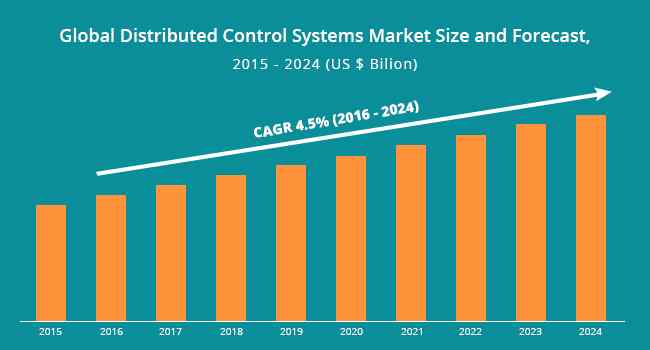
Figure: Overview of DCS Market Size and Forecast
Individually controlling, reporting, and monitoring the components are enabled using integrating distributed control systems with process plants. To manage the database, control logic, graphics, and system security, DCS uses a set of configuration tools. Moreover, it supports modification, upgrade, and integration to the existing architecture of any industry.
What is Distributed Control Systems (DCS)?
Distributed Control Systems (DCS) is a computerized control system for a process or plant that consists of a large number of control loops, in which autonomous controllers are distributed throughout the system, but there is central operator supervisory control.
DCS can be used to enhance reliability and reduce installation costs by localizing control functions near the process plant, with remote monitoring and supervision.
These systems are used on large continuous process plants where high reliability and security is required.
Structure of DCS:
As DCS contains the distribution of the control processing around nodes in the system, the complete system is reliable and mitigates a single processor failure. It will affect one section of the plant process; if a processor fails and the whole process will be affected when the central computer fails. This distribution of computing power to the field Input / Output (I/O) field connection racks also ensures fast controller processing times by removing possible network and central processing delays.
The below diagram showcases the functional manufacturing levels using computerized control:
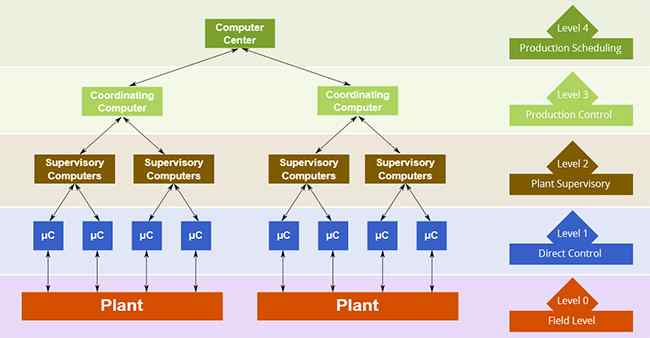
Referring to the diagram;
Level 0: It consists of the field devices such as temperature sensors, flow, and final control elements such as control valves.
Level 1: It consists of the industrialized Input / Output (I/O) modules, and their associated distributed electronic processors.
Level 2: It is included with supervisory computers that help to gather information from processor nodes on the system, and provide the operator control screens.
Level 3: It is the production control level, which does not directly control the process, but is concerned with monitoring production and monitoring targets.
Level 4: It is the production scheduling level
On the other hand, Level 1 and Level 2 are the functional levels of a traditional DCS, in which all equipments are part of integrated systems from a single manufacturer.
Levels 3 and 4 do not strictly process control in the traditional sense, but where production control and scheduling takes place.
Examples of DCS:

The architecture of DCS:
Distribution Control Systems (DCS) consists of three major qualities.
1) Various control functions can be distributed into small sets of subsystems that are of semiautonomous. These are interconnected by a high-speed communication bus and their functions include data presentation, data acquisition, process control, process supervision, reporting information, storing and retrieval of information.
2) The second characteristic is the automation of manufacturing process by integrating advanced control strategies.
3) The third characteristic is arranging the things as a system.
The organizing of the entire control structure as a single automation system can be done with DCS as it unites sub-systems through a proper command structure and information flow. DCS is included with basic elements such as engineering workstation, operating station or HMI, process control unit, smart devices, and communication system.
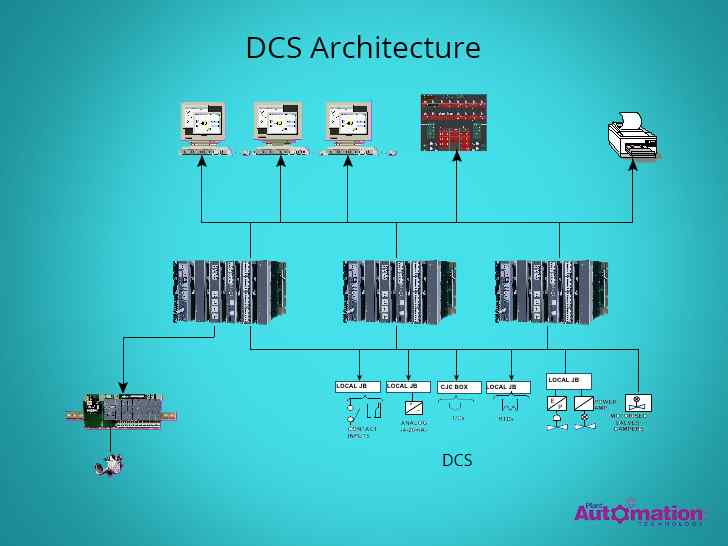
Features:
Distribution Control Systems (DCS) can be used in various control applications with more number of I/O’s with dedicated controllers. These systems are used in manufacturing processes where designing of multiple products in multiple procedures such a batch process control.
Features of DCS are:
• System redundancy
• More sophisticated HMI
• Scalable platform
• System security
Applications:
Distributed control systems (DCS) are majorly used in manufacturing processes that are continuous or batch-oriented.
Applications of DCS include:
• Chemical plants
• Petrochemical (oil) and refineries
• Pulp and Paper Mills
• Boiler controls and power plant systems
• Nuclear power plants
• Environmental control systems
• Water management systems
• Water treatment plants
• Sewage treatment plants
• Food and food processing
• Agrochemical and fertilizer
• Metal and mines
• Automobile manufacturing
• Metallurgical process plants
• Pharmaceutical manufacturing
• Sugar refining plants
• Agriculture Applications
Benefits of DCS:
Benefits of using DCS include:
• It requires minimal troubleshooting
• It contains HMI graphics and faceplates
• Alarms
• Lends itself to better organization and consistency than a PLC/HMI combo
• Batch management is possible
• OPC server
• Reduced engineering time
• Redundant operator system servers
|
Also Read: Integrating IoT and DCS Control Systems for Smart Manufacturing |
How is DCS different from PLC?
To perform advanced regulatory control on a plant-wide scale, DCSs contain the built-in infrastructure. Slower processes typically require coordination across various production units. Superior speed makes PLCs a better choice for applications involving fast production startup using discrete I/O. They also offer range in I/O granularity and maintainability.
At the same time, the DCS is hybridized to incorporate PLCs and PCs to control certain functions and to provide reporting services.
Below mentioned are the differences between DCS & PLC:
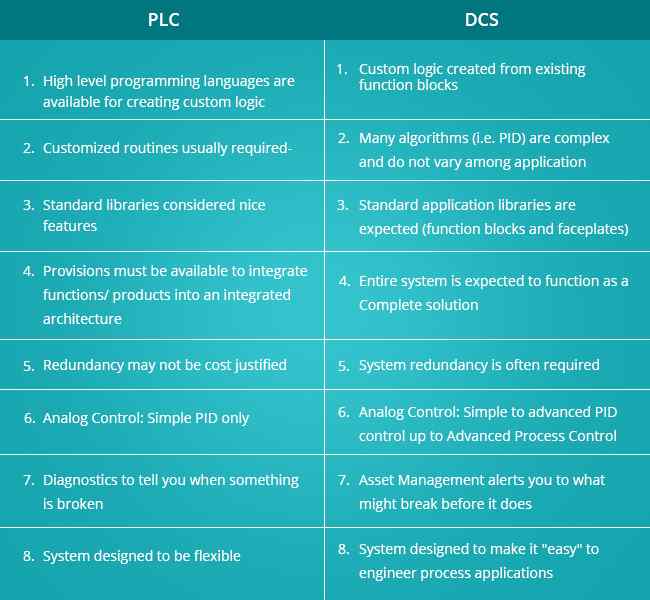
Which one is better in which condition?
The major difference between the PLC and the DCS is the database i.e. when using DCS, the engineering work can be performed in one environment. For example, mimics, programming, trends, reports, and program creation can be executed.
In a PLC environment, two databases are required to carry out engineering work i.e. programming, I/O configuration etc.
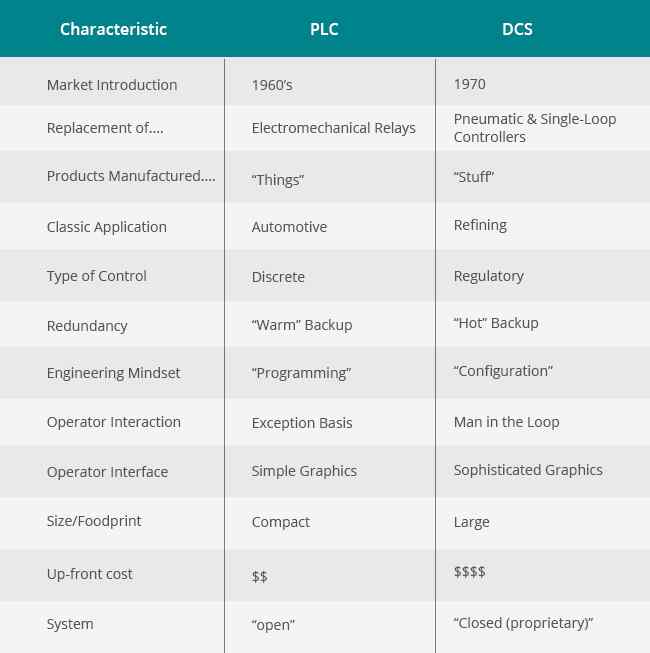 c
c
Difference between PLC & DCS: (PLC vs. DCS)
To differentiate between PLC & DCS, there are five key factors to consider: They are:
1) Response Time:
PLCs are fast, which make the PLC an ideal controller for real-time actions such as a safety shutdown or firing control.
A DCS takes much longer time to process data, which made it not the right solution when response times are critical.
2) Scalability:
A few thousand I/O points can be handled by a PLC whereas DCS can handle many thousands of I/O points and accommodate new equipment, process enhancements, and data integration.
DCS can be preferred when advanced process control is required and contain a large facility that’s spread out over a wide geographic area with thousands of I/O points.
3) Complexity
The advanced process control capabilities of the DCS are required to carry out the complex nature of many continuous production processes such as oil and gas, water treatment and chemical processing.
4) Frequent process changes
PLCs are used for processes that will not change often. And, a DCS is the better solutions when the process is complex and requires frequent adjustments or must analyze a large amount of data.
5) Vendor support
To provide integration services and implement process changes, DCS vendors require users to employ them. System integrators perform similar functions for PLC-based systems. It has also become common for PLC vendors to offer support services through their network of system integrator partners.
| Also Read:The Importance of Network Security in Distributed Control Systems (DCS) for Automation |
Overall, DCS tends to be used in large continuous process plants where high reliability and security is important, and the control room is not geographically remote.

